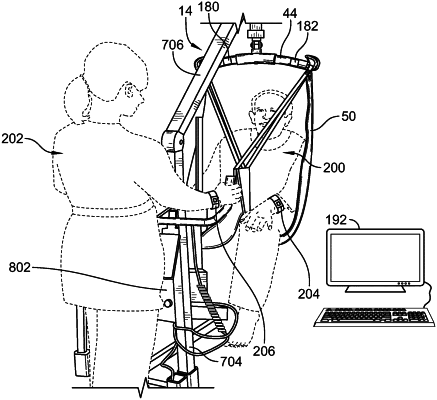| CPC A61G 7/1051 (2013.01) [A61G 7/10 (2013.01); A61G 7/1001 (2013.01); G16H 40/63 (2018.01); A61G 5/14 (2013.01); A61G 2203/12 (2013.01); A61G 2203/30 (2013.01); A61G 2205/60 (2013.01); G16H 10/65 (2018.01)] | 19 Claims |

|
1. A person lift system comprising:
a motor having an enabled state and a disabled state,
a sling bar coupled to the motor, the sling bar including a first attachment hook at a first end region of the sling bar and a second attachment hook at a second end region of the sling bar, wherein while the motor is enabled, engagement of at least one user input will operate the motor to raise or lower the sling bar, and while the motor is disabled, the motor is inoperable to raise or lower the sling bar despite engagement of the at least one user input,
a sling including a main body section and a plurality of loops coupled to the main body section, each of the plurality of loops configured to attach to one of the plurality of attachment hooks,
a first electronic reader coupled to the sling bar adjacent the first attachment hook,
a second electronic reader coupled to the sling bar adjacent the second attachment hook,
a plurality of short range wireless tags, each of the plurality of short range wireless tags coupled to a respective one of the plurality of loops,
wherein the first and second electronic readers read short range tag identification signals from the short range wireless tags to determine whether a proper first subset of the plurality of loops is coupled to the first attachment hook and a proper second subset of the plurality of loops is coupled to the second attachment hook, and
a patient tag coupled to a patient, wherein a control system places the motor in the enabled state in response to the first electronic reader or the second electronic reader reading the patient tag and a unique identification signal from the patient tag matching a patient identification entered into the control system, and
wherein the control system places the motor in the disabled state in response to the unique identification signal from the patient tag not matching the patient identification entered into the control system.
|